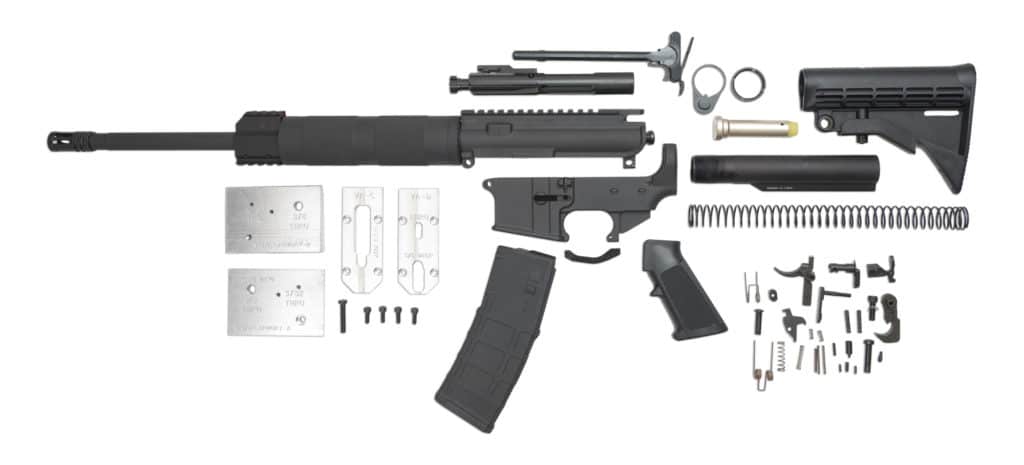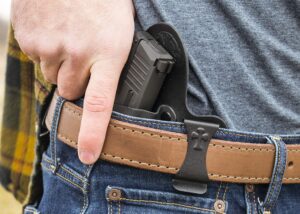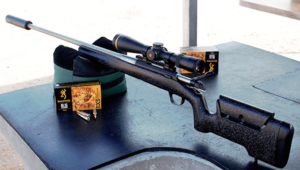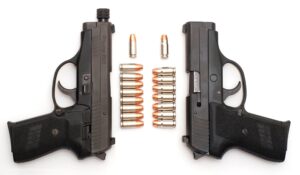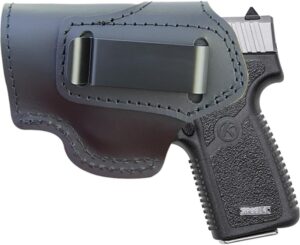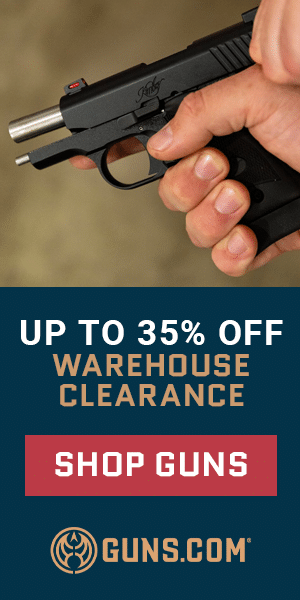The AR-15 is loved by millions of Americans and shooters across the country. It’s one of the most-sold firearms currently in production. It also has a political rap sheet, having captured some bad press by too many legislators.
With ever-growing state restrictions and calls for new federal bans getting louder, it’s no wonder more shooters are choosing to build their AR-15s unregistered, using an 80% lower.
Unpack This Article's Arsenal
Get Great Guns And Ammo Deals!
SAFEST NEWSLETTER - WE WILL NEVER SELL YOUR EMAIL
No Spam - No Selling Your Email
80 Percent Lowers Explained
So, what exactly is an 80 percent lower? In the eyes of the Bureau of Alcohol, Tobacco, and Firearms
(ATF), it’s a receiver blank. A receiver blank is a piece of metal or polymer that roughly resembles the shape of a firearm receiver but isn’t considered one yet, because it’s not functional.
The black hats at the ATF spell out what separates a receiver blank (not a firearm) from an AR-15 stripped receiver, a firearm by definition.
This photo, taken from the ATF, illustrates how they classify a receiver blank. Note the missing pin holes for the lower parts kit. It is not functional in any way.
This receiver blank has no fire control cavity, the area where you’d install your trigger and parts kit. You, the builder, are responsible for fabricating the receiver with hand tools.
Yes, it’s Legal to Build a Gun at Home
The Gun Control Act of 1968 has long held that it’s perfectly legal to build your own gun at home with no license or other paperwork required:
“No, a license is not required to make a firearm solely for personal use. However, a license is required to manufacture firearms for sale or distribution.
The law prohibits a person from assembling a non–sporting semiautomatic rifle or shotgun from 10 or more imported parts, as well as firearms that cannot be detected by metal detectors or x–ray machines. In addition, the making of an NFA firearm requires a tax payment and advance approval by ATF.” – ATF, November 6 2017
To be sure, this is not the same as purchasing a stripped receiver from a gun store or FFL. The law says you can fabricate your own firearm from raw material.
And doing so has some unique benefits.
An 80% lower keeps your AR-15 off the grid
A receiver blank is not legally considered a firearm at the time of purchase. Until you complete your receiver with an 80 lower jig, it’s just a hunk of aluminum. This is good news for the shooter who wants to keep their weapons off the government’s books:
- An unfinished 80% lower doesn’t hold you liable as a firearm owner
- The receiver blank doesn’t get tracked by the ATF
- *Your finish receiver doesn’t need a serial number
- *You don’t need to deal with an FFL to purchase or build it
- *You don’t need to submit to a background check to build
*Unless you live in California or other restrictive states. Do your homework first.
Build kits like this are popular because they can be bought and shipped directly to you. Since there is no firearm receiver in the kit (only a receiver blank), you don’t need to deal with an FFL to purchase.
Starting to see the advantages?
Getting from 80% to a Firearm
The 80% lower gets its name not from the ATF or any legislation, but from manufacturers. There are various receiver blanks available for rifles and handguns (like the Glock), but the AR-15’s blanks get their name aptly so: They’re roughly 80% complete.
These blanks have most of the complex work done: The buffer tube housing and detent are drilled and threaded, the bolt catch and magazine catch/release are fabricated, the takedown pin holes are already drilled, the trigger housing is set up, and the magazine well is complete.
You must perform the following machining steps:
- Drill the hammer and trigger pin holes
- Drill the safety selector lever pin hole
- Drill and cut out the fire control group cavity
Completing these three steps turns your blank into a stripped lower receiver that’s ready for a lower parts kit, upper receiver, and some range time. Pretty simple.
Receiver Blank Parts Compatibility
The only difference between a black rifle (or pistol) built with a receiver blank and a store-bought gun is the origin of the receiver itself. Any finished 80% lower receiver will sport the same physical internal dimensions and fittings as a receiver made by a big-name gunmaker.
That means you’re not restricted to buying specialty parts or proprietary trigger kits, barrels, and the like. Once your blank is machined, you can build virtually any AR-15 using any parts you’ll find on the market or in store.
Types of Receivers
The 80% market has receiver blanks for every store-bought AR platform or receiver you could otherwise buy through an FFL. Forged and billet 80% lowers are most common, though polymer units are available for ultra-light builds.
We wrote a guide that details how AR-15 receivers are made. We also compare their materials, including forget and billet. This guide should help you pick out the appropriate receiver blank for your own build.
Cost: Receiver Blank vs. Stripped
With how flooded the AR-15 market has become over the last few years – and with all the gun control scares – there are stripped receivers now available for as little as $60. These are complete units ready for a build. Some builders ask if this gunsmithing project is even worth it.
Is it worth it?
Investing in an 80% lower requires buying some hand tools: You’ll need to invest in at least a handheld router and hand drill, as well as a jig. Total initial investment comes out to around $300:
- A typical forged 80% lower costs $60
- An entry-level drill press jig costs around $80
- A good router and drill will run around $150 to $200
Or
- A drill press can be used instead, costing $100 to $150
There are added costs if you decide to purchase a stripped receiver instead:
- The cheapest stripped receiver costs around $60
- Some FFLs charge up to $30 to $40 for a background check
- If buying online, a transfer fee of around $35 must be paid
- Some states have firearm application fees costing $100 or more
We see how expensive buying a stripped receiver becomes with those added costs – around $200 or more in some states.
But with your initial investment for an 80% lower covered, building more AR-15s becomes incredibly inexpensive. You can simply purchase another receiver blank, throw it in the jig, do some work, and you’ve got a second firearm to build for well under $100.
You also don’t need to pay any fees for a background check, there are no extra taxes to pay, there’s no waiting period, and there is no paperwork to deal with at the Federal level.
In summary:
Too long, didn’t read? Here’s the short-n-sweet:
An 80% lower is a receiver blank used to build an AR-15. Many shooters choose this route to build an unregistered rifle. This is completely legal to do in most states (check your state laws). Using a receiver blank allows you to build a black rifle in most calibers and configurations.
The initial investment is high, but owning the tooling offers an affordable alternative to buying stripped receivers – and paying background check fees and taxes – over and over.
Recommended Reading
Best AR-15 Calibers And Cartridges
How To Build an AR-15 Upper Receiver
AR-15 Furniture and Accessories

